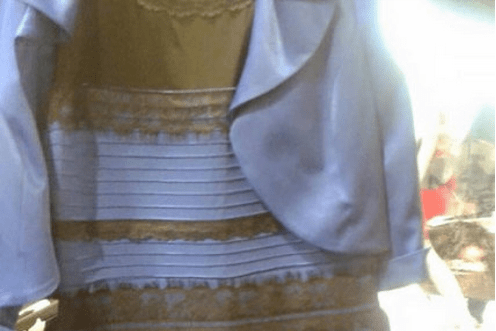3Qs: Why can’t we agree on the color of The Dress?

On Thursday, a photo of a party dress hit the Internet, and never has a garment been so polarizing. To some, the photo shows a white dress with gold lace. To others, the dress is blue with black lace. So, which is right? Well the answer isn’t as black and white as you’d think. We turned to Peter Bex, a vision scientist and psychology professor, to explain why people can’t seem to agree on the color of the now infamous dress.
Why do people see different colors when looking at this photo of the dress?
The apparent color of any object, including this dress, depends on both the material of the object and the light illuminating it. In the real world, different viewers can generally compare and agree on lighting and infer the color of the dress from the light reflected from it. This ability is known as “color constancy” and it explains why the apparent color of objects is relatively invariant across different lighting conditions. In this photograph, however, viewers must estimate both the lighting and the dress color from the single image on screen – even small differences in their estimate of the lighting will dramatically affect their estimate of the color of the dress.
Is there something particular about this image that is evoking this response?
This image is particularly ambiguous because of uncertainty about the dress and uncertainty about the lighting. Furthermore, perceived color is influenced by our knowledge of the expected colors of objects and there are more differences in the colors of dresses than in the color of other familiar objects, such as fruit. Additionally, the lens in our eyes change as you get older and this may lead to different estimations of the dress color among observers based on age.
So, what color is the dress?
I cheated and looked at the dress though a hole in a piece of white paper, it is brown and pale blue.





